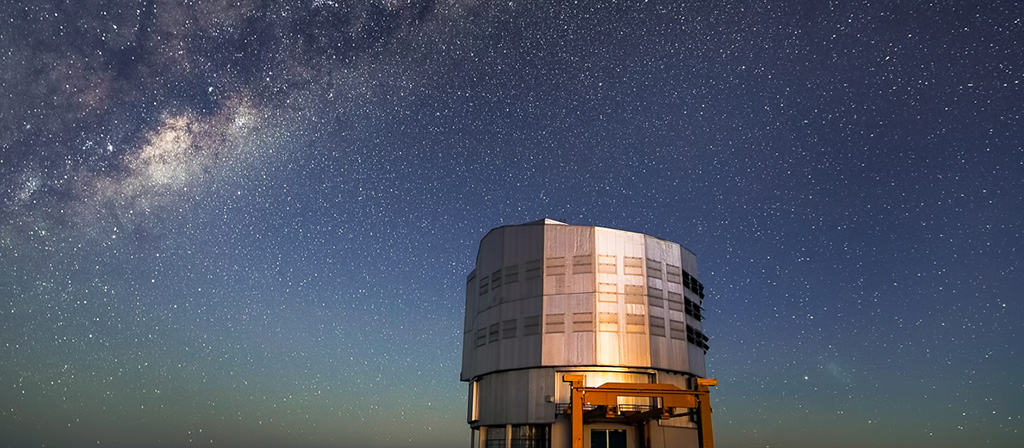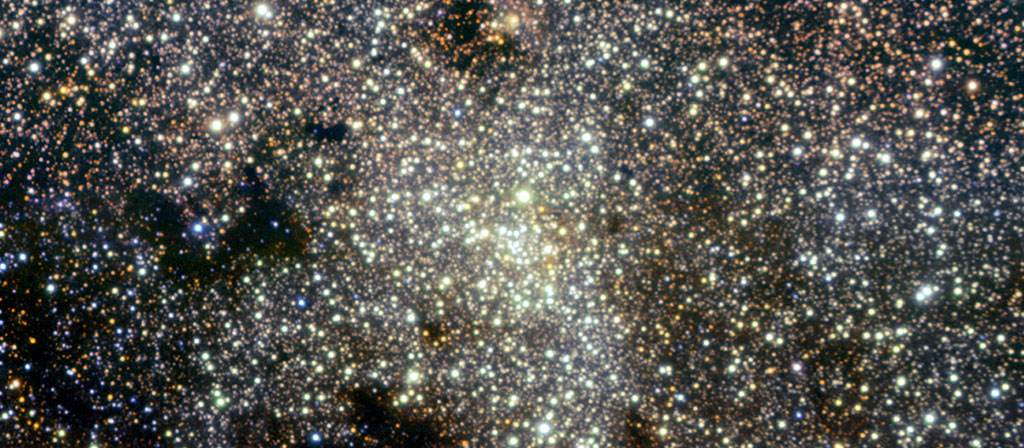[:en][three_fourth last=»no» spacing=»yes» center_content=»no» hide_on_mobile=»no» background_color=»» background_image=»» background_repeat=»no-repeat» background_position=»left top» hover_type=»none» link=»» border_position=»all» border_size=»0px» border_color=»» border_style=»» padding=»» margin_top=»» margin_bottom=»» animation_type=»» animation_direction=»» animation_speed=»0.1″ animation_offset=»» class=»» id=»»][fusion_text]
*By Manuela Zoccali, MAS Deputy Director
The most faithful of our followers might remember that in August 2018, the Millennium Institute of Astrophysics (MAS) launched a citizen science project through the international Zooniverse platform, the most relevant website on this topic (that kind of science where professionals’ researchers and “ordinary” citizens join strengths to solve scientific problems). The project is called Variable Star Zoo, and it was the first Chilean project on that website. The volunteers learned through an illustration that represented the variation in the brightness of a star in time. They were asked to classify the variable star type, comparing its luminosity pattern and the different types available.
Last month, the project was completed. And it is a victory which we are very proud of. In less than two years, more than 5000 volunteers from Europe, India, the United States, Brazil, Mexico, Canada, among others (and Chile, of course) completed more than 860,000 classifications of 60,000 stars in total. Not only was it an excellent contribution to science, but also, we wouldn’t be able to do this on our own. We are excited to see the effect of bringing our job closer to thousands of people we cannot see and who had fun with us. We want to joyfully tell you, to our science colleagues, that this project works: it is a viable way. People, in general, like to get involved in the research. We were even asked by a Russian newspaper to review this project that stopped being ours to become a part of thousands! Maybe it surprised them that name of the postdoc in charge of the website, professor Lacerna from Universidad de Atacama, is Iván, like Iván the Great.
Why is it so essential to classify variable stars? And why do we need help from citizenship? It is necessary to remind you that, when we stare at the sky, even using the most powerful telescope, the stars are nothing but lighted little dots. To study the Universe, we need to know about those small dots: how much energy they emit, what their distances are, how big and hot they are, where they are moving to, etc. Those are one of the questions that come up when we are observing a little dot that, honestly, in most cases, doesn’t help us to answer those questions. Fortunately, among these many dots, there are some which pulsate. In their way, they wave to us in Morse code! All of the star astronomers are focused on them. The advantage is that we know this alphabet, and then these stars can tell us a lot about their stories. In fact, pulsating stars are in a life stage we know really well because only under certain physics conditions in their core they can pulsate. And we can have an answer because they do so.
The issue is to find the ones pulsating, which is not that easy as it might seem. One of the projects of the MAS institute studies the central region of our Galaxy called the bulge. With the VISTA telescope at Cerro Paranal near Antofagasta, we measure, precise and accurately, the luminosity of two billion stars in the bulge of our Galaxy, repeating the measurement 100 times within several years. If we compare these 100 measurements, it is pretty hard to isolate the stars presenting changes in their brightness.
We already know something: They are two billion! The dark side is there exist different reasons to change the luminosity of a star in time, even the regular change, and not all of them are related to the situation in its inner part. For instance, some of them change because they are two, revolving around each other, and are constantly eclipsing each other. Those are telling us nothing about their inner part. The last step then is to recognize, among every star presenting changes in its brightness, those which are pulsating stars, and how do we recognize them? Because of the pattern they follow when they increase or decrease their brightness.
And here is the complicated issue. Who on earth watches the brightness variation pattern of two billion stars? A possible answer is: an astronomy student! And it was the first thought that came to my mind. Unfortunately, that relies on the definition of torture in the Universal Declaration of Human Rights, and it is ruled out. The other possibility is: a computer. Even though any computer is safe and super-fast calculating numbers, its ability to identify patterns is lower than a human brain. Everybody had been asked to identify some letters or find pictures with cars to prove that “I’m not a robot” to log in to a website. We can identify the computers because they can’t tell the difference between patterns, which any human can do it without even think about it. Our problem is that we are way slower, and we got bored easily. But if many humans can work on that, all together are faster and more accurate than a computer. That is why is one of the most significant values of citizen science.
Due to the people’s contributions in the project Variable Star Zoo, we know that inside of 60 thousand variable stars we ran tests on, eight thousand are very old stars, pulsating in a narrow period. The computer had identified less than four thousand. These stars allow us to write a 3D map of our Galaxy’s central region on how was that part when it born. Many others turned out to be very young stars, with periods of several days located in regions where the gas has become stars in recent epochs. Those stars teach us the process of star formation. There are also very odd stars that a computer won’t ever identify because we didn’t know they existed, and then we won’t be able to explain how to search them. A star got weaker and weaker as the observation time passed until it got 100 times weaker than it was at first. We still don’t know which object is that one, but now that we know it exists, we can better analyze it. And without a doubt, we will learn something new from it. We have a lot of work to do!
As always, the experience of getting astronomy closer to citizenship is fulfilling for both sides. We, the Variable Star Zoo project researchers, are so grateful to the more than 5000 volunteers who work next to us. Thank you! About that, we wanted to thank personally the Chilean volunteers who did a really high number of classifications, and a year ago we invited them to the UC observatory. It was a fun night, in which we discovered, among other things, that our project was helpful to motivate a young lady who was in treatment of cancer, who couldn’t leave her house. This activity was before we all have to be isolated at home. Now she recovered: A tight hug, C.A, we won’t forget about you!
Picture: Milky Way above Paranal Credits ESO/J.Colosimo[/fusion_text][/three_fourth][one_fourth last=»yes» spacing=»yes» center_content=»no» hide_on_mobile=»no» background_color=»» background_image=»» background_repeat=»no-repeat» background_position=»left top» hover_type=»none» link=»» border_position=»all» border_size=»0px» border_color=»» border_style=»» padding=»» margin_top=»» margin_bottom=»» animation_type=»» animation_direction=»» animation_speed=»0.1″ animation_offset=»» class=»» id=»»][testimonials design=»classic» backgroundcolor=»» textcolor=»» random=»» class=»» id=»»][testimonial name=»Manuela Zoccali, MAS Deputy Director» avatar=»none» image=»» image_border_radius=»» company=»» link=»» target=»_self»]Last month, the project was completed and is a victory of which we feel especially proud.[/testimonial][/testimonials][/one_fourth][one_third last=»yes» spacing=»yes» center_content=»no» hide_on_mobile=»no» background_color=»» background_image=»» background_repeat=»no-repeat» background_position=»left top» hover_type=»none» link=»» border_position=»all» border_size=»0px» border_color=»» border_style=»» padding=»» margin_top=»» margin_bottom=»» animation_type=»» animation_direction=»» animation_speed=»0.1″ animation_offset=»» class=»» id=»»][/one_third][:es][three_fourth last=»no» spacing=»yes» center_content=»no» hide_on_mobile=»no» background_color=»» background_image=»» background_repeat=»no-repeat» background_position=»left top» hover_type=»none» link=»» border_position=»all» border_size=»0px» border_color=»» border_style=»» padding=»» margin_top=»» margin_bottom=»» animation_type=»» animation_direction=»» animation_speed=»0.1″ animation_offset=»» class=»» id=»»][fusion_text]
*Por Manuela Zoccali, subdirectora MAS
Los más apegados de nuestros seguidores quizás recuerden que en agosto 2018, el Instituto Milenio de Astrofísica (MAS) lanzó un proyecto de Ciencia Ciudadana en la plataforma internacional Zooniverse, la más importante en este rubro (esa ciencia donde investigadores y ciudadanos “de a pie” unen fuerzas para resolver un problema científico). Se llamaba Variable Star Zoo y fue el primer proyecto chileno en ese portal. Se les enseñaba a los voluntarios una gráfica que representaba la variación de brillo de una estrella a lo largo del tiempo, y se les pedía que establecieran de qué tipo de estrella variable se trataba, comparando su patrón de luminosidad con varios ejemplos disponibles.
El mes pasado el proyecto fue completado, y es un triunfo del que nos sentimos especialmente orgullosos. En poco menos de 2 años, más de 5000 voluntarios se conectaron desde Europa, India, Estados Unidos, Brasil, México, Canadá, entre otros (y por supuesto Chile) … y completaron más de 860,000 clasificaciones por un total de sesenta mil estrellas. No solo hubo aquí un tremendo aporte científico, nosotros no habríamos sido capaces de hacer esto solos, sino que además nos ha emocionado ver el efecto de acercar nuestro quehacer a miles de personas que no vemos y que disfrutó junto con nosotros. A los colegas científicos que nos leen, queremos contarles con mucha alegría que esto funciona: es un camino posible. En general a la gente le gusta tener la oportunidad de involucrarse en la investigación. ¡Hasta nos contactaron desde un diario ruso para hacer una reseña sobre este proyecto, que dejó de ser nuestro para ser de miles! Quizás les llamó la atención que el postdoc a cargo de la página, el ahora profesor Lacerna en la Universidad de Atacama, se llama Iván, como Ivan el Grande.
¿Por qué es tan importante clasificar estrellas variables? y ¿por qué se necesita ayuda de la ciudadanía? Es útil recordar que, cuando miramos el cielo, aún con el más poderoso de los telescopios, las estrellas no son nada más que puntitos luminosos. Para estudiar el universo, de esos puntitos, necesitamos saber: cuanta energía emiten, a qué distancia se encuentran, qué tan grandes son, qué tan calientes son, hacia donde se mueven, etc. Esas son algunas de las preguntas que tenemos cuando observamos un puntito que, sinceramente, en la mayoría de los casos no nos ayuda mucho, para responderlas. Por suerte, entre los muchos puntitos hay algunos que pulsan. A su manera, ¡nos hacen señas en alfabeto Morse! Toda la atención de los astrónomos de estrellas está focalizada en ellos. La gracia es que ese alfabeto lo conocemos, y entonces esas estrellas pueden contarnos muchísimo de su historia. En efecto, las estrellas que pulsan están en una etapa de su vida que conocemos muy bien, porque solamente bajo ciertas condiciones físicas de su interior, llegan a pulsar. Para ellas, y por el hecho que pulsan, podemos tener la respuesta a varias de las preguntas de arriba.
El problema es encontrar a las que pulsan, que no es tan fácil como podría parecer. Uno de los proyectos del instituto MAS estudia la región central de nuestra Galaxia, denominada bulbo. Con el telescopio VISTA, en Cerro Paranal cerca de Antofagasta, medimos, con precisión de milésimas, la luminosidad de dos mil millones de estrellas de bulbo de nuestra galaxia, repitiendo la medición 100 veces a lo largo de varios años. Si comparamos las 100 mediciones, es bastante fácil aislar las estrellas cuyo brillo cambió. Ya sabemos algo: ¡son dos millones! Lo malo es que existen distintas razones porque la luminosidad de una estrella puede cambiar en el tiempo, incluso de forma regular, y no todas tienen relación con lo que pasa en su interior. Algunas, por ejemplo, varían porque son dos estrellas, orbitando una alrededor de la otra, que periódicamente se eclipsan. Ésas no nos dicen nada sobre su interior. El último paso, entonces es reconocer, entre todas las que cambian su brillo, aquellas que pulsan ¿y cómo las reconocemos? Por el patrón que siguen cuando aumentan y disminuyen su brillo.
Y aquí llegamos al problema complicado. ¿Quién mira el patrón de variación de brillo de dos millones de estrellas? Una respuesta posible es: ¡un alumno de astronomía! Y fue lo primero que pensé. Lamentablemente eso cae explícitamente bajo la definición de tortura en la declaración universal de los derechos humanos, y queda descartado. La otra posibilidad es: un computador. Pero si bien cualquier computador es seguro y rapidísimo para calcular números, su habilidad para reconocer patrones es muy, muy inferior a la de un cerebro humano. A todos se nos ha pedido reconocer un conjunto de letras, o buscar en cuales imágenes aparecen autos, para demonstrar que “no soy un robot” al acceder a alguna página web. Pillamos a los computadores por ese problemilla que tienen para reconocer patrones, cosa que cualquier humano hace sin pensarlo. Nuestro problema es que somos mucho más lentos, y nos aburrimos rápidamente. Pero si podemos trabajar muchos humanos, todos juntos somos rápidos y más certeros que un computador. De ahí uno de los grandes valores de la ciencia ciudadana.
Gracias al aporte de la gente en el proyecto Variable Star Zoo, ahora sabemos que dentro de las 60 mil estrellas variables que sometimos a análisis, ocho mil son estrellas muy viejas y que pulsan con un período de pocas horas. El computador había identificado menos de cuatro mil. Éstas nos permiten construir un mapa 3D de la región central de nuestra galaxia, como era esa parte de la Vía Láctea cuando recién se formó. Varias otras resultaron ser estrellas muy jóvenes, con períodos de varios días, que se encuentran en regiones donde el gas se ha convertido en estrellas en épocas muy recientes. Esas nos permiten aprender sobre el proceso de formación de las estrellas. También hay algunas que son rarísimas, y que un computador no habría identificado nunca porque no sabíamos que existían, y por lo tanto no habríamos sabido explicarle cómo buscarlas. Hay una estrella que se fue poniendo más y más débil a lo largo de todo el tiempo de observación, hasta quedar 100 veces más débil de lo que era al principio. Aún no sabemos qué objeto será ese, pero ahora que sabemos que existe podemos estudiarlo mejor, y sin duda aprenderemos algo nuevo de él. ¡Tenemos mucho trabajo!
Como siempre, la experiencia de acercar la ciencia a la ciudadanía es enriquecedora para ambos lados. Nosotros, los investigadores del proyecto Variable Star Zoo, estamos muy agradecidos con esos más de 5000 voluntarios que trabajaron junto con nosotros. ¡GRACIAS! A propósito, quisimos agradecer personalmente a los voluntarios chilenos que realizaron un número muy alto de clasificaciones, y hace un año los invitamos al observatorio docente de la UC. Fue una noche entretenida, en la que descubrimos, entre otras cosas, que nuestro proyecto sirvió para entretener y motivar a una joven en tratamiento de cáncer, que no podía salir de su casa. Esto mucho antes que todos tuviéramos que vivir el estar confinados en la casa. Ahora está recuperada: ¡un abrazo C.A., no nos olvidamos de ti!
Foto: Vía Láctea sobre Paranal Crédito ESO/J. Colosimo[/fusion_text][/three_fourth][one_fourth last=»yes» spacing=»yes» center_content=»no» hide_on_mobile=»no» background_color=»» background_image=»» background_repeat=»no-repeat» background_position=»left top» hover_type=»none» link=»» border_position=»all» border_size=»0px» border_color=»» border_style=»» padding=»» margin_top=»» margin_bottom=»» animation_type=»» animation_direction=»» animation_speed=»0.1″ animation_offset=»» class=»» id=»»][testimonials design=»classic» backgroundcolor=»» textcolor=»» random=»» class=»» id=»»][testimonial name=»Manuela Zoccali, subdirectora MAS» avatar=»none» image=»» image_border_radius=»» company=»» link=»» target=»_self»]El mes pasado el proyecto fue completado, y es un triunfo del que nos sentimos especialmente orgullosos. [/testimonial][/testimonials][/one_fourth][one_third last=»yes» spacing=»yes» center_content=»no» hide_on_mobile=»no» background_color=»» background_image=»» background_repeat=»no-repeat» background_position=»left top» hover_type=»none» link=»» border_position=»all» border_size=»0px» border_color=»» border_style=»» padding=»» margin_top=»» margin_bottom=»» animation_type=»» animation_direction=»» animation_speed=»0.1″ animation_offset=»» class=»» id=»»][/one_third][:]












